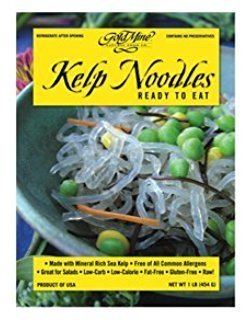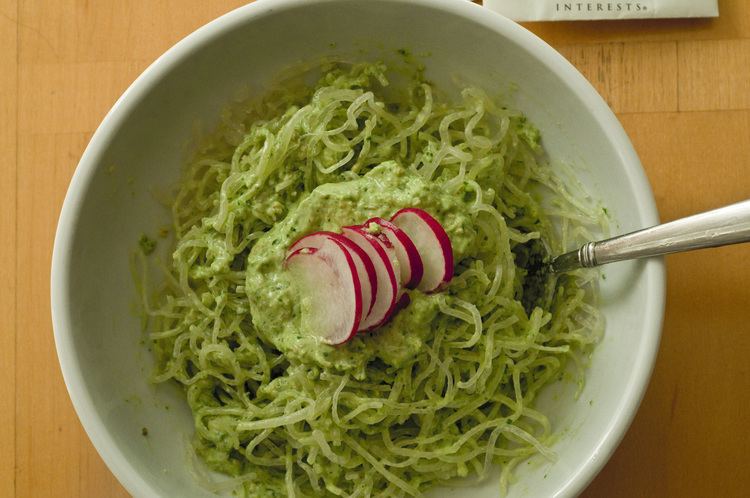Region or state Asia Food energy(per serving) 6 kcal (25 kJ) Main ingredient Kelp | Main ingredients Kelp Protein 0g g | |
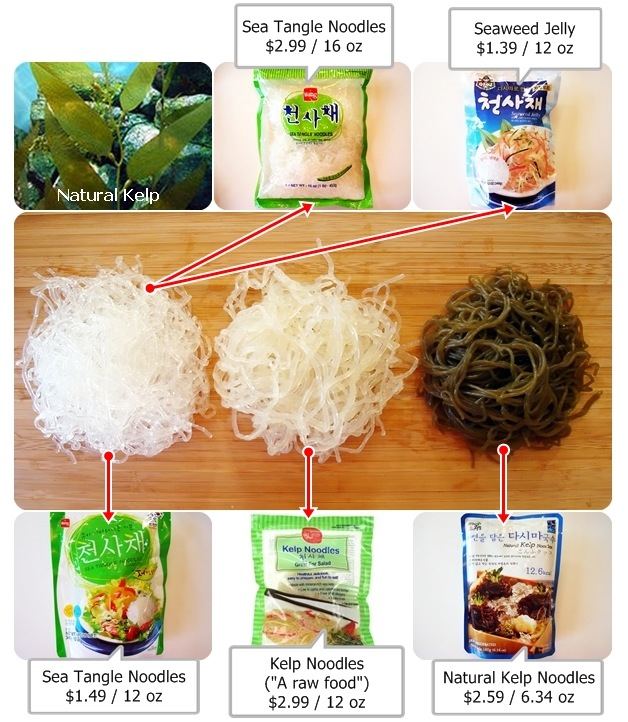 | ||
Place of origin South Korea, Japan, & China Nutritional value(per serving) Protein0g gFat{{{fat}}} gCarbohydrate1 g Similar Kelp, Edible seaweed, Shirataki noodles, Tamari, Dulse | ||
Are kelp noodles by sea tangle a raw food kelp noodle are used in many raw foods recipes
Kelp Noodles are a raw noodle made from edible seaweed. Kelp has been included in the diets of many civilizations, including the Chinese, Greeks, and Icelanders. The largest consumer of kelp are the Japanese, who have incorporated kelp and seaweed in their diets for over 1,500 years. Kelp noodles are becoming more popular outside Japan. Kelp noodles can be eaten raw, however, for added taste, some consumers prefer to cook the noodle in water and add spices for flavoring. The noodles can be purchased online or in health food super markets. Some restaurants are starting to offer their customers kelp noodles as an alternative to noodles or rice in their dishes.
Contents
- Are kelp noodles by sea tangle a raw food kelp noodle are used in many raw foods recipes
- Peanut miso kelp noodles cheap clean eats
- Nutrition
- Dishes
- Potential economic impact
- References
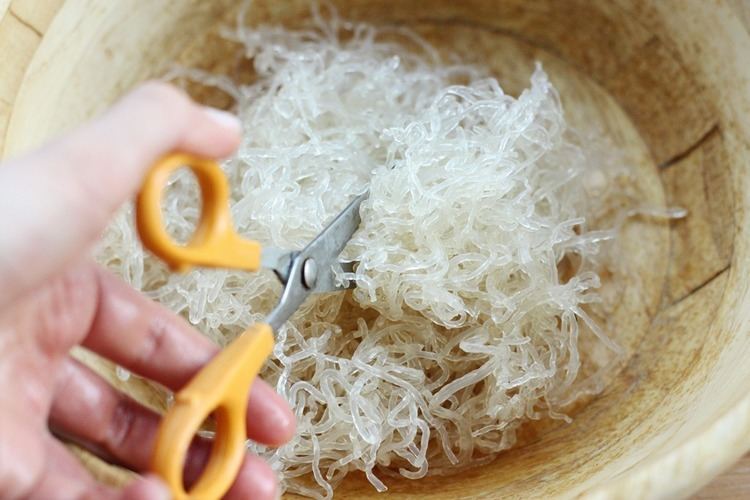
Peanut miso kelp noodles cheap clean eats
Nutrition
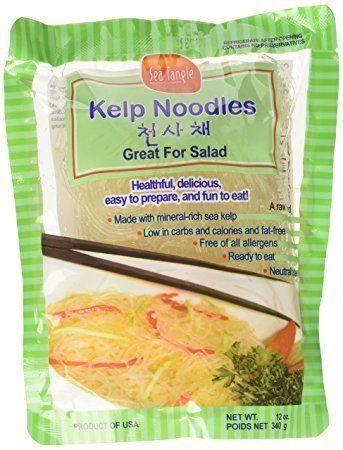
Kelp noodles are appealing to dieters because they are fat-free and gluten-free. These noodles are also rich in nutrients. A 1/2 cup serving includes 134 milligrams of calcium, 2.28 milligrams of iron, and 52.8 micrograms of vitamin K. Oddly though they have been eaten for well over 1,000 years no on knows the iodine content of one serving.
Dishes
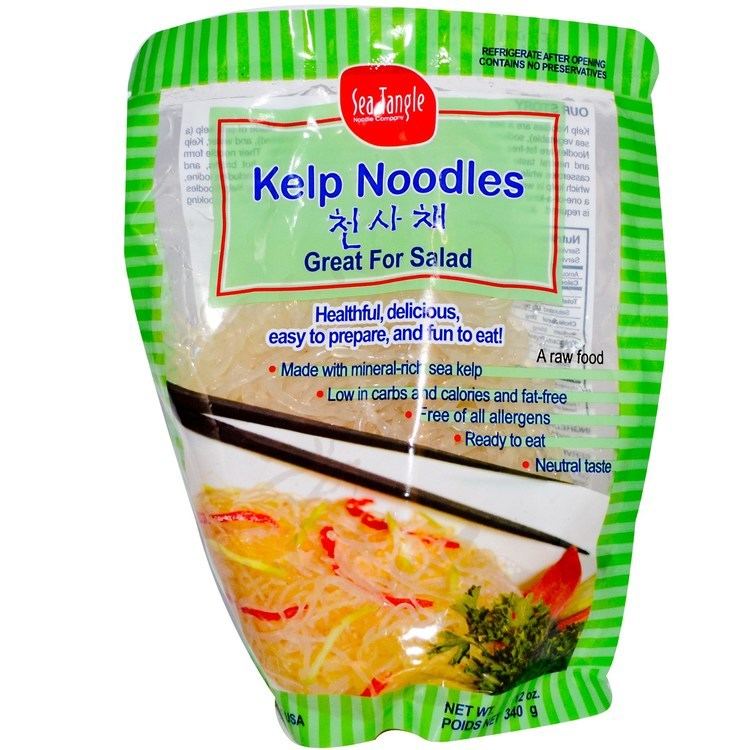
Kelp noodles are mostly prepared in Asian cuisine, or as a low-carb substitute for rice and pasta in various dishes. The most common dishes kelp noodles are used in are soups, salads, stir-fries and vegetable side dishes. Kelp noodles have a neutral taste so they take on the flavors of the dishes they are added to.
Potential economic impact
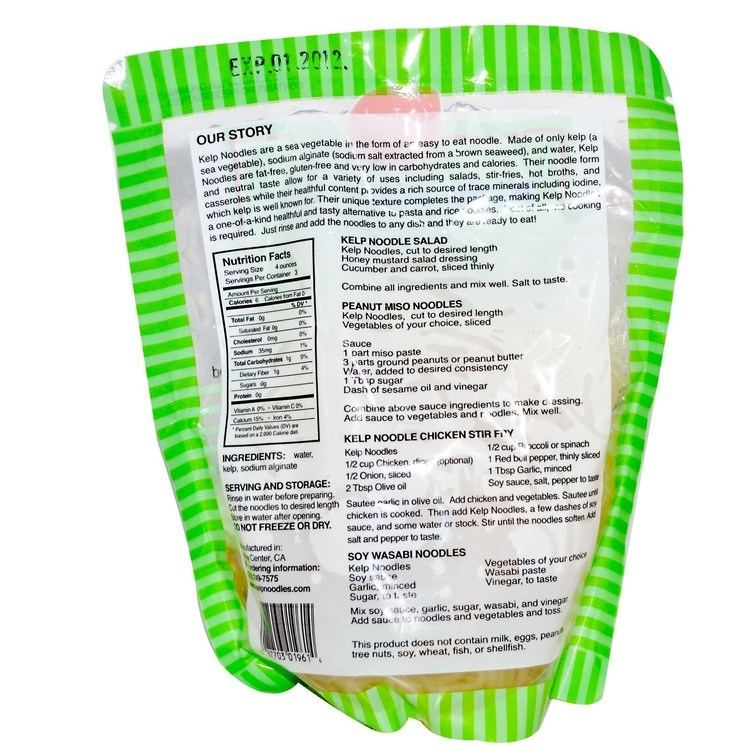
The popularity of kelp noodles among health-conscious consumers is growing, partially because demand for gluten-free food products is rising.
